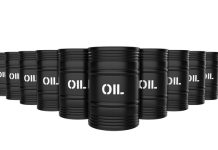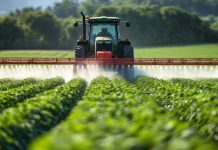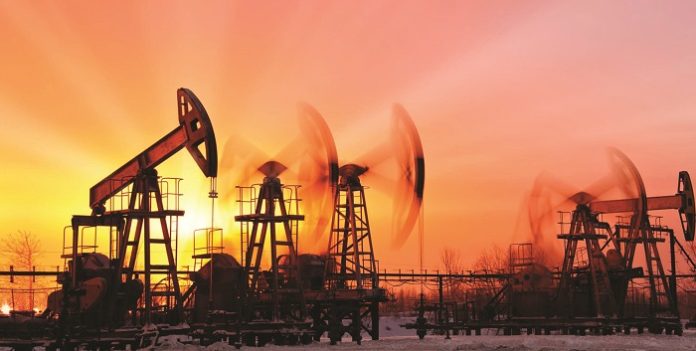Introduction
Chemicals are essential for the production of myriad consumer and industrial products. The industry greatly influences our safe water supply, food, shelter, clothing, health care, computer technology, transportation, etc. And more than 96% of all manufactured goods are directly dependent on the chemical industry for raw materials, additives and finished formulations to sustain almost every facet of modern life.
In India, the chemical industry occupies a pivotal position in meeting basic needs and improving the quality of life. The Indian chemical industry is the mainstay of industrial and agricultural development and provides building blocks for several downstream sectors such as textiles, papers, paints, soaps, detergents, and pharmaceuticals, among 80,000 other consumer products. The supply of these chemicals is directly proportional to the demand for the products. For eg: The agrochemical sector ensures food security, the synthetic fibre industry is crucial to providing affordable clothing and the pharmaceutical industry gives the country’s vast population access to low-cost and effective drugs. Even construction, automobile and other manufacturing operations require the use of chemicals or chemical components.
India is currently the 6th largest manufacturer of chemicals and owing to its roots, it has been one of the leading producers in segments like dyes, polymers, agrochemicals, and pigments globally. Local as well as global investors and stakeholders have prioritised the specialty chemicals industry, bringing in large amounts of funds into the sector. This sector has grown at a steady rate of 15% p.a. for the past decade wherein its role as the key enabler of economic growth has been well-established worldwide.
The sector is expected to double from $30 billion to $60 billion by 2025. Agrochemicals, textile chemicals, dyes, and specialty polymers are among the top segments and are expected to maintain their lead and grow as the market demand broadens over the next 5 years. Flavours and fragrances, food additives, cosmetic chemicals, and water management chemicals are expected to emerge as fast-growing segments globally with its demand experiencing an upward curve.
Segmental Analysis
The agrochemicals market in India is expected to grow at 8% CAGR reaching $3.7 billion by FY22 and $4.7 billion by FY25. Agriculture is one of the oldest occupations in India, the utilisation of pesticides and fertilisers is significantly increasing owing to population growth and adoption of advanced farming practices in the region. Farmers are focusing on investing in crop-protecting and growth-boosting chemicals. India, along with China and Japan, has the largest agrochemical markets in the Asia Pacific region.
The global textile chemicals market size is projected to reach USD 26.40 billion by 2027, indicating a CAGR of 3.2%. India ranks 2nd in producing and exporting textiles and is likely to register the fastest textile chemical market growth during the next 5 years.
The petrochemical market in India, in terms of volume, stood at 42.50 million tons and is estimated to reach 49.62 million tons by 2025. It will expand at a compound annual growth rate (CAGR) of ~6.14% between FY 2021 and FY 2025. The petrochemical market in India can be broadly divided into 3 distinct areas – basic petrochemicals, intermediates, and other petro-based chemicals. The basic petrochemical segments, consist of synthetic rubber, synthetic detergent intermediates, performance plastics, and polymers. They dominate the market, accounting for ~45.53% of the share of the market volume last year. Intermediates came next followed by other petro-based chemicals.
The specialty chemical sector witnessed healthy revenue growth in the past few decades owing to growth in domestic demand as well as increasing exports. Asia’s share in the total demand for specialty chemicals is expected to grow 50% by 2025.
Global trends that have been shaping the Industry
• Technological advancement has given rise to tools that not only enhance employee efficiency & productivity but also scale up production and analyze consumer behaviour to target the right audience.
• The focus on sustainability, wherein green chemistry is incorporated into the value chain as part of the innovation goal to improve existing products and formulate new products that are environmentally friendly, creates growth opportunities for the industry.
• Stringent regulatory policies also play a vital role in ensuring personnel health and environmental safety as they aim to minimize hazards to both.
• In recent months, escalating global trade tensions emerging from the Covid-19 pandemic situation has led to further tightening of environmental compliance norms and purchase managers feeling uncomfortable with extremely high dependence on a single source. This has become a rallying cry for investors to look elsewhere.
 The limitations for the Indian chemical industry so far have been the small or unorganised players who could not meet the rapidly increasing demand. The industry is now headed towards consolidation owing to the implementation of GST and demonetisation. Environmental threats have been and are a concern that has driven plants in countries across the globe to either closures or huge challenges but with larger chemical companies implementing more and more sustainable methods, this threat is only limited to smaller companies.
The limitations for the Indian chemical industry so far have been the small or unorganised players who could not meet the rapidly increasing demand. The industry is now headed towards consolidation owing to the implementation of GST and demonetisation. Environmental threats have been and are a concern that has driven plants in countries across the globe to either closures or huge challenges but with larger chemical companies implementing more and more sustainable methods, this threat is only limited to smaller companies.
Specialty chemicals have myriad uses across a broad range of industries, such as polymers and plastics, adhesives, paints and coatings, lubricants, cleaning materials and many more. Any disruption in this industry has a cascading effect on various other sectors that are dependent on it. Uneven demand for specialty chemicals has been observed across different segments since the COVID-19 outbreak.
Global speciality chemical production witnessed a decline of nearly 6% in March 2020 due to raw material and labour shortages, coronavirus-induced lockdowns, government-mandated plant shutdowns and production declines. These disruptions brought about by the pandemic highlight the importance of resilient infrastructures, smart supply chains, logistics and diversified markets. Manufacturers will need to make well-informed strategic changes and restructure their businesses to navigate this uneven demand scenario until the threat of the pandemic is over and industry dynamics return to pre-outbreak levels.
Key growth drivers of the industry in India
India’s specialty chemicals potential is increasingly being recognised at the global level.
• India can play a dominant role in the global specialty chemicals industry as it has got the advantage of skilled human resources and a big consumer market.
• It stands out as far as demography and availability of technical manpower are concerned.
• With major refineries and petrochemical plants located over India’s coastline, the country’s position in the global chemical industry is unique as it has easy access to petrochemical feedstocks and major demand centres, both catered through ports.
• Increasing income levels and a young population have led to a consumption-driven economy with a strong demand for construction, automotive, packaging, water treatment, home and personal care, food processing, nutraceuticals and other sectors.
• The government focuses on improving ease of business through flagship programmes such as Make in India and the Aatmanirbhar Bharat Abhiyan to provide much-needed support to this sector and create an environment that attracts further investments.
• The government plans to implement a production-link incentive system with 10-20% output incentives for the agrochemical sector; to create an end-to-end manufacturing ecosystem through the growth of clusters.
• Trained workforce, manufacturing expertise and cost-effective margins
• The capability to provide product/application development at a favourable price-performance ratio is a critical success factor for the ever-evolving Indian economy.
Thus, the specialty chemicals industry, just like IT and pharma, stands to gain rich dividends from its skilled human resources and a big consumer market. The focus on improving products, increasing the production capacity and rise in the number of end-use domestic markets specialty chemicals is expected to facilitate strong economic growth in India clocking 12-13% CAGR in the next five years leading to India’s emergence as a global chemical and petrochemical manufacturing hub.

































